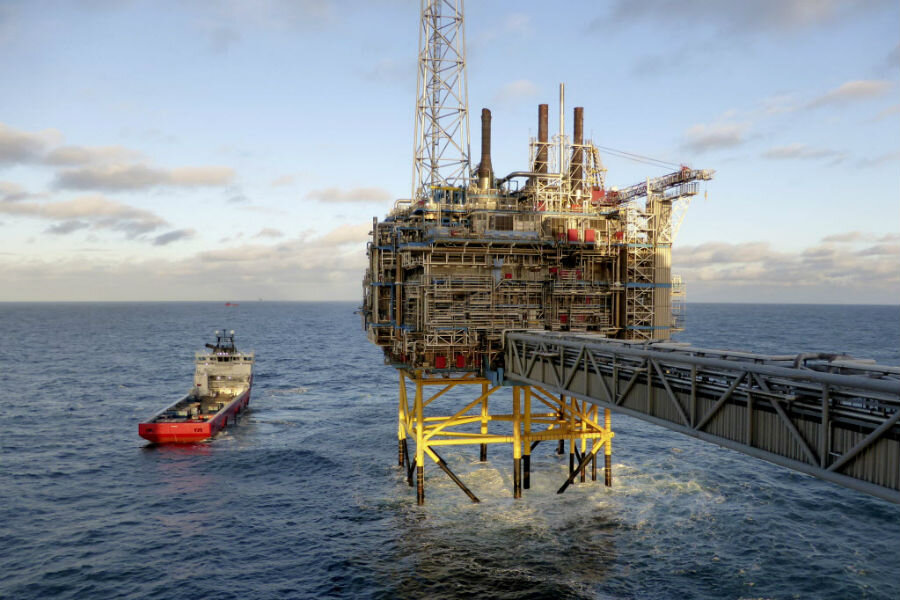Is Norway ready to go carbon neutral?
Loading...
The Norwegian parliament voted this week to become carbon neutral by 2030. That appears to mean that the nation's net carbon footprint would be reduced to zero over the next 14 years.
“This is a direct response to the commitments Norway took on by ratifying the Paris agreement and means that we will have to step up our climate action dramatically,” said supporter Rasmus Hansson, the leader in parliament of the Norwegian Green Party, The Guardian reported.
The announcement comes amidst a chain of high-profile environmental protection moves in the Scandinavian nation. In May, the parliament made a sweeping move against deforestation, committing the government to only contract within deforestation-free supply chains. Then there were reports at the start of June that gas and diesel cars would no longer be sold in Norway by 2025; a move that would increase the prevalence of electric vehicles, which already make up nearly a quarter of the nation's new car sales.
But some observers, even those within the Norwegian government, are skeptical that there is sufficient groundwork to make that goal feasible, while others question whether carbon neutral just means investing in the environment without reducing emissions.
Climate Minister Vidar Helgesen, a Conservative Party member, is “not comfortable” with the proposed timeline, saying that the mechanisms parliament suggests using in order to meet the goal do not currently exist.
“It is incumbent on me to underline that this proposal from parliament is really about carbon offsets,” Mr. Helgesen told the Guardian. “It is not about national emissions reductions beyond what we will contribute, through the EU process.”
Helgesen is pointing out that carbon neutrality represents a calculated net figure. When calculating neutrality, the UN factors in a country’s investments in environmental projects abroad and their contribution to restrictions on worldwide emissions.
That means that while Norway itself is currently responsible for 53 million tons of carbon dioxide emissions, an increase from 1990, the country’s emissions can be balanced by environmental good works abroad for the carbon neutral label. These contributions are called carbon offsets. The European Union system also allows for countries within it to trade emission allowances amongst themselves.
The language in the Norwegian parliament’s motion, translated by the Guardian, points to the international component of the carbon neutral plan: “climate neutrality can be achieved through the EU emissions trading market, international cooperation on emissions reductions, emissions trading and project-based cooperation.”
Norway, which is not a part of the European Union, does participate in the EU emissions trading market. Extraction of resources from its oil fields make it Europe’s largest liquid petroleum provider and the world’s third largest natural gas exporter, according to the US Energy Information Administration.
The country has been pushing for other European nations to switch from coal, to meet global climate targets.
“If Europe were to replace coal with Norwegian natural gas, this would result in a 50% decrease in greenhouse gas emissions for every unit of energy produced. We produce gas with low emissions, which can replace coal with high emissions,” Karl Eirik Schjøtt-Pedersen, director of the Norwegian oil and gas association, said at a January meeting of Arctic nations, according to the Guardian. Norway was criticized that same month for approving licenses that would allow oil companies to explore new areas for drilling in the northern seas.
This week's carbon neutrality announcement is not a first for the country. Norway made a similar proposal in 2008, setting its target for carbon neutrality at 2030, before backing off after the 2009 UN climate talks in Copenhagen did not end in a multinational deal.
At that time, there was skepticism about whether the country would actually reduce emissions or just fund environmental programs elsewhere.
"They're willing to spend a lot of money on a climate policy that's based abroad, but so far they haven't been quite so willing to make politically difficult choices at home that people will feel," Steffen Kallbekken, a senior analyst at the nongovernmental organization, Cicero, the Institute for International Climate and Environmental Research, told the New York Times at the time. "So it's not so much of a model as it could be."
That same year, the World Wildlife Foundation study entitled “Norwegian Consumption, Chinese pollution“ found Norway’s appetite for imports is increasing pollution in developing nations – a predicament that is certainly not limited to the Scandinavian nation. Carbon footprint calculations do not take into account the emissions produced by goods that are imported into countries, the study says.
The current proposal, by Climate Minister Helgesen’s summation, is missing some crucial details about how the nation will proceed to reach its goals. And the government will be asking parliament for more details, the Guardian says.
However, there is a concerted effort by some in Norway's legislature to ensure that the country becomes a model of restrained natural gas usage, and that the carbon neutrality is not reached purely through carbon offsets.
“Our climate neutrality position could mean nothing if it is done that way,” Mr. Hansson of the Green Party said, noting his desire to see the country be a viable contributor the goal, agreed upon in Paris, to keep the earth’s temperature from rising more than 1.5 degrees Celsius above pre-industrial levels.





